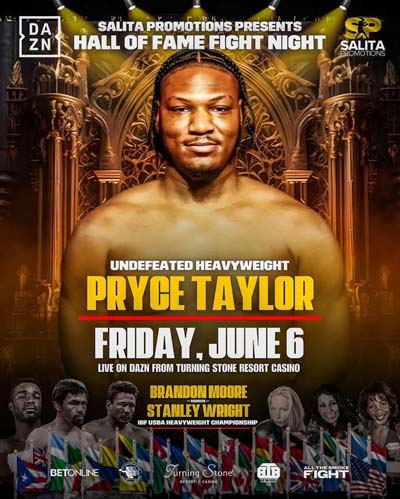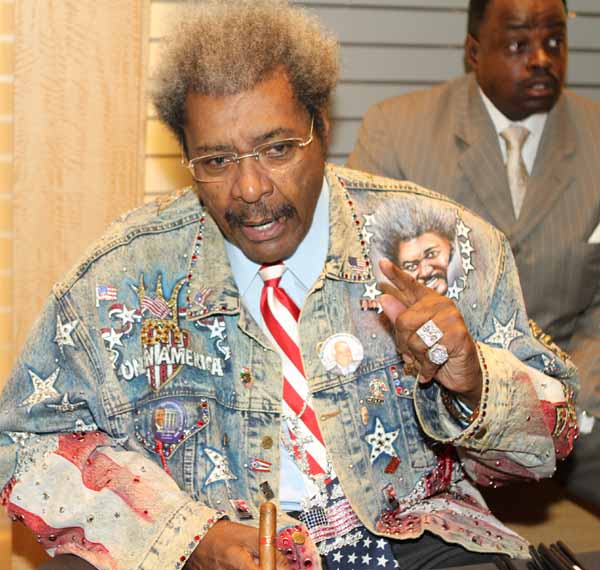Fifteen years is a long time. To adjudge just how long, think of one name in the boxing world, Mike Tyson. Fifteen years ago this week, Mike Tyson laid a very solid claim to the title, ” the baddest man on the planet” by annihilating, and there’s really no other word for it, Michael Spinks in just over a minute in a heavyweight championship bout in Atlantic City.
Fifteen years later, Tyson continues to scuffle around the heavyweight ranks, but he is now known more for his bizarre conduct and statements to the press than for his ferocious boxing skill in the ring. Tyson was scheduled as a “program saver” for the original incarnation of the Lennox Lewis championship fight on June 21. However, remaining true to his career-long erratic behavior, Tyson dropped out of the scheduled bout soon after it was announced. Fifteen years ago, though, Mike Tyson was as fearsome a fighter as there was in the sport and was talked about in the same sentence as Jack Dempsey, and nobody snickered.
Michael Spinks was a very good fighter. Not a great fighter, maybe not even the best fighter in his family, but Michael Spinks never was a “tomato can”. He won the light heavyweight title in 1981 from a very tough Eddie Mustafa Muhammad and leading up to that 15 round decision, had beaten the formidable Yaqui Lopez and Marvin Johnson. Running out of opponents at 175lbs, after beating Dwight Braxton, Spinks moved to heavyweight and handed Larry Holmes his first loss, then repeated the 15 round decision in a rematch. Spinks was no “walkover”.
Tyson, on the other hand, in 1988, was thought by many to be unbeatable. This label seemed secure given the crop of opposition that he had laid waste to since he had turned professional three years earlier. He had beaten “up and comers” (Marvis Frazier), “whack jobs” (Mitch Green), seasoned veterans (Trevor Berbick) and fading former champs (Larry Holmes) and Tyson had done it with an ease that astounded the boxing community and its many resident experts. A bout with Michael Spinks seemed a natural. Tyson was, essentially, a “small” heavyweight and Spinks was a “grown up” light heavyweight.
I was “flacking” for a major soft drink company in 1988 and they decided to dip their marketing toe in the waters of professional boxing. The Tyson/Spinks fight was the biggest fight of the year since it had Tyson and a opponent many “experts” thought had a legitimate chance to hand Tyson his first defeat. Spinks could punch, the thinking went, he had speed, and if he could take Tyson into the later rounds, Tyson could grow frustrated, might begin to make mistakes and it would be a “Spinks Jinx” night. In retrospect this thinking, particularly the later rounds, was absurd.
The fight was held at Donald Trump’s casino in Atlantic City, an excess of opulence amid the squalor of a “bust out town” hard by the Atlantic Ocean. In 1988, gambling was relatively new to Atlantic City and the promise of the better things that gambling was going to bring to the old resort town was on the lips of every politician who was “on the pencil” at the casinos. Fifteen years later, the squalor is just as bad, maybe worse, and the casinos are just as contrastingly opulent and the politicians are still staying in “comped” rooms and eating for free at big fights. In June, 1988, Mike Tyson and Michael Spinks was the big fight.
Spinks was handled by Butch Lewis, a “Don King wannabe”, who, like every promoter ever born, knew a meal ticket when he saw one and he saw a big one in Michael Spinks. Lewis was a gadfly who, if he had been paid by the word, could have retired for life after his first press conference. Butch Lewis made Don King look almost sedate. Almost. Donald Trump was, likewise, a ubiquitous presence at every public workout and press conference and with Lewis, King and Trump in front of the microphones, reporters were running out of notebooks. However, those three never seemed to run out of words or a reporter to listen to them.
Kevin Rooney, in June 1988, was still in Tyson’s camp, although this would be the last time. As a result, leading up to the bout, Tyson trained well and often. I’m fairly sure that after Rooney left, preceded by Teddy Atlas, years before, Tyson only listened to one voice; a high-pitched, erratic voice, that always seemed to be there in the fighter’s often troubled psyche. The advice he was getting from himself wasn’t nearly as good as that he had gotten from Atlas and Rooney and certainly not close to the guidance he had received from Cus D’mato.
Although they were both champions, Spinks came into the ring first that June night, looking fit. Butch Lewis, never one to “waste” a crowd did a running “shtick” with the celebrities in the crowd as he accompanied his fighter to the ring. I remember Sylvester Stallone was ringside and I distinctly recall many people commenting “that’s Rocky?”, since, in person, Stallone, like many actors, might pass for a middleweight, but never a heavyweight. Tyson came next, in his usual “no frills” look; no robe, no socks, just a sleeveless shirt, over plain black boxing trunks. I was close enough to the ring to see the fighter’s faces clearly and the thing I remember, to this day, is the way Spinks looked at Tyson as Mike climbed through the ropes. It wasn’t fear, Michael Spinks was a guy who had come up in the projects in St Louis, but the look on his face wasn’t too far away from “Oh, my God, what have I got here”.
The fight, such as it was, was over in a flash. After the instructions in the center of the ring during which Spinks looked at everything but the one thing that was troubling him the most, the fighters went back to their corners and, at the bell, Tyson literally charged across the ring. Spinks, backpedaled, hands in front of him, Tyson throwing punches from all angles, pushed Spinks to the ropes and moments later Spinks was on the canvas. He got up, and probably three quarters of the crowd wondered “Why?”. Seconds later he was down again and this time the count was a formality. Spinks got up looking more relieved than he had been since he first saw Tyson climb through the ropes. Tyson was hugged by Kevin Rooney and then surrounded by an uncountable number of minions, sycophants and hangers-on who had rushed into the ring almost before the referee had finished his count. The bout had lasted barely more than a minute and I remember thinking, “this guy is unbeatable”. Who else was there for him to fight. The answer seemed to be, nobody.
Of course, Tokyo and Buster Douglas were eighteen months in the future and Desiree Washington and Indianapolis shortly after that. Jail time followed, then Evander Holyfield and his ear and finally, and inexorably, the Pyramid in Memphis and Lennox Lewis a year ago. While the beating Lewis administered in Memphis was nothing like the destruction of Spinks in Atlantic City, its still hard for me to believe that the same Mike Tyson was involved in both those bouts. Once, last year, on the wrong end of Lennox Lewis’ powerful punches, the other as a unbelievably devastating destroyer of a very good fighter, believed by many, to have a good chance against “the baddest man on the planet”.
In ancient Rome, legend has it that each time a conquering hero returned from a triumphant battle he was marched through the streets amid the cheers of minions, sycophants and hangers-on (or whatever the Roman equivalent was). Alongside the chariot of the conquering hero, would be a servant, who continually whispered, “Sic transit gloria mundi”, literally translating to “the glory of this world passes away”. It was very loud that night in Donald Trump’s casino, in 1988, but it seemed, to me, from where I was sitting, that all the those people pushing and shoving to get close to the conquering hero in the middle of the ring were only singing his praises. Thinking back fifteen years, “the baddest man on the planet” probably could have used at least one guy, with a rudimentary grasp of Latin, to whisper a note of caution in his ear. On second thought, he probably wouldn’t have listened. Bernie McCoy



